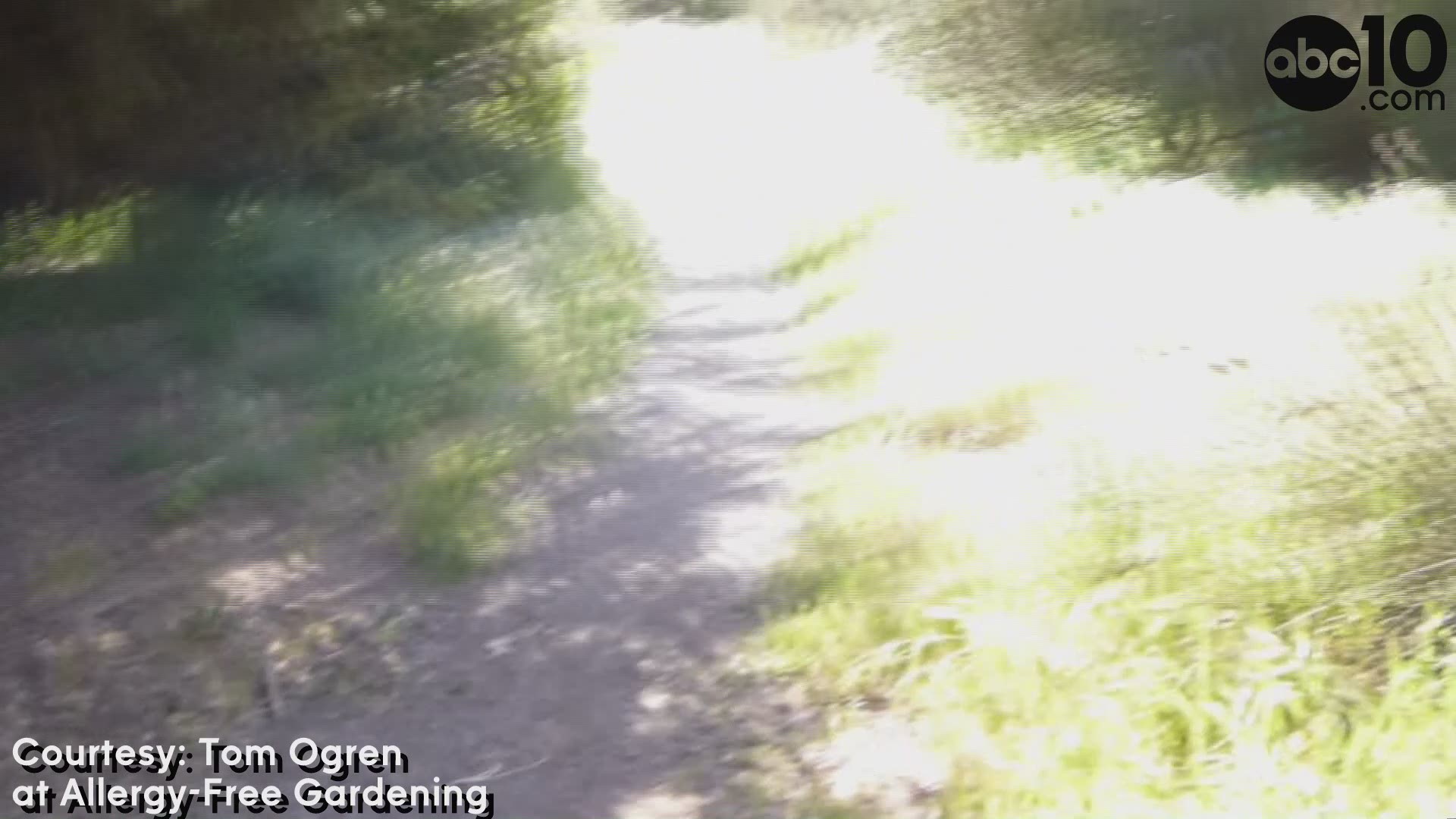A California researcher believes better choices in trees for landscaping both public and private can help reduce the misery of pollen allergies.
Tom Ogren, a San Luis Obispo writer and pollen expert, became interested in studying pollen and its effects because of his wife’s allergies. In the course of his research, he began to realize that most of the trees being planted, going back 50 years or more, were males.
It had become popular in horticulture circles, because male trees don’t produce fruit and are therefore less messy for landscaping.
Consider the ginko tree: while a lovely addition to any yard, the female trees drop a lot foul smelling berries at certain times of the year. The males do not. So nurseries commonly sell grafted male seedlings.
In a phone interview with Ogren from his home in San Luis Obispo, he called it “botanical sexism.”
Ogren noted that a rise in allergy rates has followed the widespread planting of trees that tend to produce a lot of highly allergenic pollen. While only 10 percent of the United States population suffered from allergies 25 years ago, now the rate is 38 percent and rising, according to information posted on his website.
“All the planted Xylosma (a common hedge plant) is male, most of the sweet bay trees planted are a male clone ‘Saratoga,’ almost all honey locust trees planted are male selections, almost all mulberry and willow planted in Sacramento is male. Almost all the newer Italian cypress are now all male selections,” according to notes compiled by Ogren on Sacramento horticulture.
Male mulberry trees are among the most allergenic plants, and are very common in Sacramento.
Ogren has developed the Ogren Plant Allergy Scale, or OPALS, which he billed the world’s first plant allergy scale.
He reviewed a list of trees the City of Sacramento gives away free to homeowners, noting that the selection factors include mature size and height, water needs, growth rate, flowers, fall color and whether they are deciduous or evergreen -- but nothing about their allergenic potential. He is prepared to correct this omission.
The best, low-allergy options on the list are redbud, hawthorn, tulip tree, strawberry tree, chitalpa, crabapple, pear, golden raintree, Japanese snowbell, chaste tree, Chinese fringe tree, magnolia and crape myrtle.
The worst pollen offenders are Arizona cypress, male ginkgo, bur oak, blue oaks, cork oaks, sycamore, Kentucky coffee trees/male clones, live oak, holly oak, podocarpus (males – should only use females from cuttings) red oaks, river birch, swan hill olive trees, scarlet oak, English oak, valley oak, and willow oak.
Ogren recommended other female trees, including Chinese pistache, bay laurel, podocarpus, deodar cedars, poplars, tupelo, red maple clones, willows, juniper.
Exposure to large quantities of allergenic pollen is a factor in the development of allergies, Ogren said.
Ogren is in favor of planting trees. He just thinks that the preference for male trees that guided the types of trees sold in nurseries is misguided, and has led to serious unintended consequences.
Along with a rise in allergies is an increase in asthma, which at its most severe can be deadly.
“To a lot of people trees are trees,” he said. “To me, each tree is a specific type of tree. Trying to increase the total canopy is alright if you do it right.”

